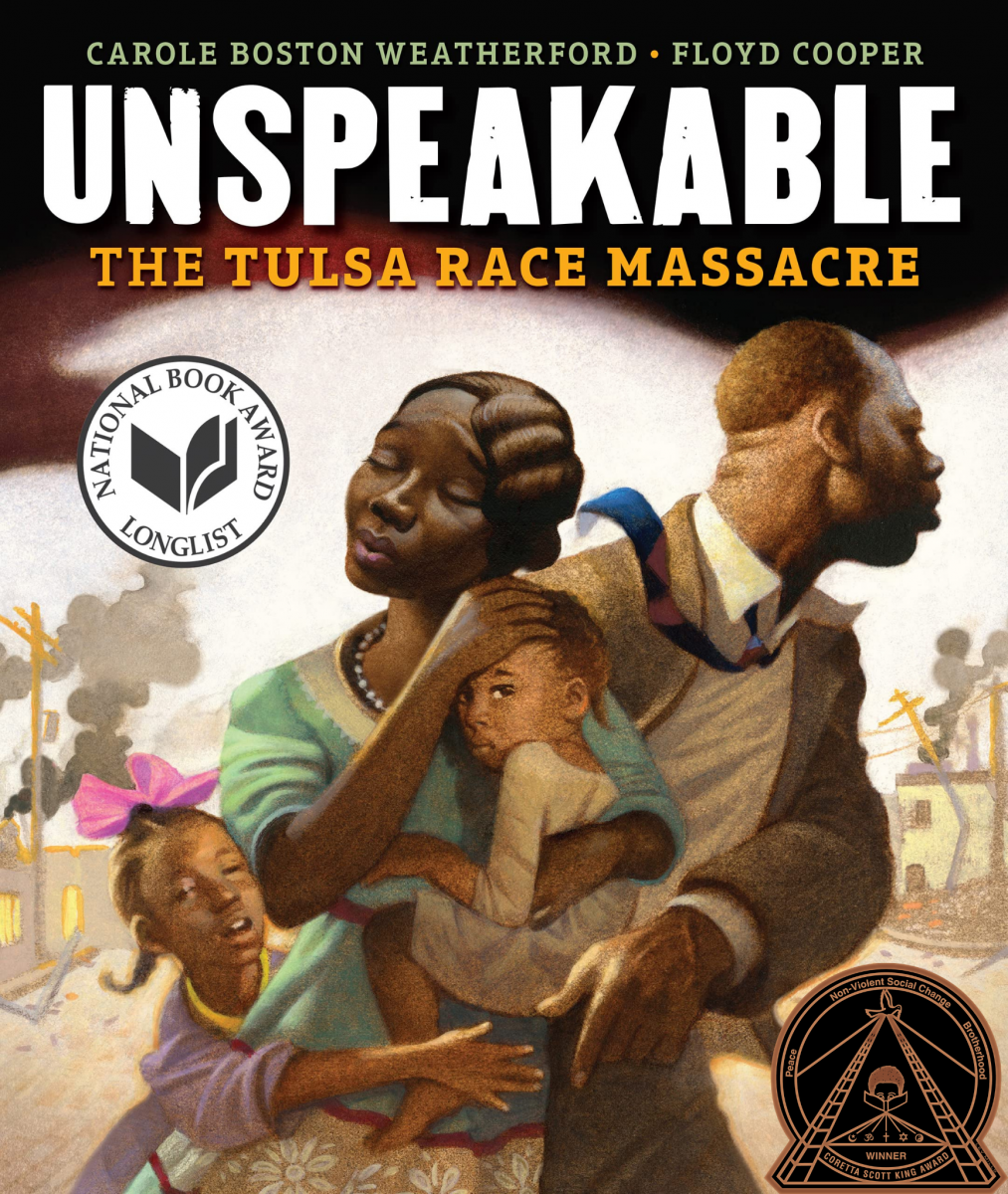Once upon a time in Tulsa, there was a community called Greenwood. Its residents descended from Black Indians, from formerly enslaved people, and from Exodusters, who moved West in the late 1800s fleeing the violence and racism of the segregated south.
Once upon a time in Greenwood, there were some ten thousand people living in a thirty-five-square-block area. Train tracks divided the Black and white communities. Segregation laws called for separate neighborhoods, schools, phone booths, and railroad and streetcar coaches. Unfair tests made it hard for Blacks to register to vote. And laws barred marriages across racial lines.
So many Black businesses cropped up along a one mile stretch of Greenwood Avenue, that educator and business leader Booker T. Washington called the area the “Negro Wall Street of America.” The name later became Black Wall Street, and the community kept thriving.
Once upon a time on Black Wall Street, there were dozens of restaurants and grocery stores. There were furriers, a pool hall, a bus system, and an auto shop- nearly two hundred businesses in all. There were also several libraries, a hospital, a post office, and a separate school system, where some say Black children got a better education than whites.
There were two Black-owned newspapers – The Tulsa Star and the Oklahoma Sun – and over twenty churches. And fifteen Black doctors, including Dr. A. C. Jackson, the most able Black surgeon in the nation. On Detroit Avenue stood grand homes of doctors, lawyers and prominent businessmen.
Once upon a time in Greenwood, there were barbershops and beauty salons. Miss Mabel’s Little Rose Beauty Salon boomed on Thursdays when maids who worked for white families got coiffed on their day off and strutted in style up and down Greenwood Avenue. The soda fountain at Williams Confectionery was the backdrop for scores of marriage proposals.
And there was the luxurious Stradford Hotel, then the largest Black-owned hotel in the nation. Black guests were welcome there even as there were barred from Tulsa’s white hotels. Once upon a time in Greenwood, there were two movie theaters including the eight-hundred-seat, Black-owned Dreamland. There were even six privately owned airplanes.
But in 1921, not everyone in Tulsa was pleased with these signs of Black wealth – undeniable proof that African Americans could achieve just as much, if not more than, whites. All it took was one elevator ride, one seventeen-year-old white elevator operator accusing a nineteen-year old Black shoeshine man of assault for the simmering hatred to boil over.
With the accused man in jail, the white-owned Tulsa Tribune newspaper ran a headline prompting readers to “nab” him. Fearing the man would be lynched – killed by a mob before his trial – thirty armed Black men rushed downtown to his rescue.
Comprehension Questions
1. What kind of residents lived in Greenwood?
A. Pilgrims
B. Former slaves, exodusters and Black indians
C. Native Americans
A. A white person accused a black person of assault.
B. The white people wanted to take over the town.
C. An elevator ride.
Your Thoughts
Vocabulary
4. List any vocabulary words below.

